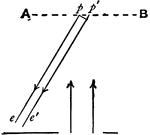The Miscellaneous Optics ClipArt gallery offers 76 illustrations related to general optics.
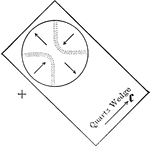
Biaxial Interference
"A positive biaxial interference figure with the principal sections nearly corresponding to those of…
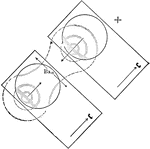
Biaxial Interference
"A biaxial interference figure showing the emergence of an optic axis. The arrow indicates the movement…
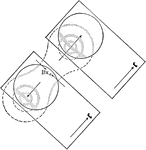
Negative Biaxial Interference
"A negative biaxial interference figure. The arrows indicate the movement taking place upon inserting…
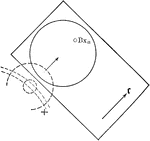
Positive Biaxial Interference
"A positive biaxial interference figure. The arrows indicate the movement taking place upon inserting…
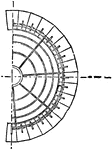
Catadiopteric Light
"Catadioptric Fixed Light.—This apparatus, in which a central burner is used, consists of a dioptric…
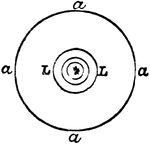
Catadioptric Holophote
"Catadioptric Holophote.—Part of the anterior hemisphere of rays is intercepted and at once parallelized…
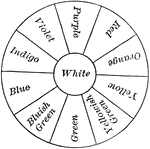
Complementary color wheel
"Any two colors standing opposite each other are complementary to each other. If such colors are blended,…

Condensing Apparatus
"Condensing Apparatus for Steamer's Side Lights.—By means of this application of the condensing…

Condensing Apparatus
"Condensing Apparatus for Steamer's Side Lights.—By means of this application of the condensing principle…
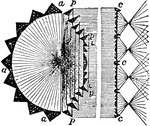
Condensing Light
"Fixed Conensing Light for a Single Sector, 1850.—The holophote Light pLp throws its whole light on…
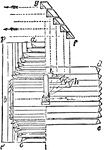
Condensing Octant
"Condensing Octant.—The central fixed apparatus bb with spherical mirror dd throws its rays directly…
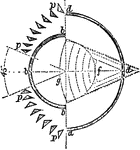
Condensing Octant
"Condensing Octant.—The central fixed apparatus bb with spherical mirror dd throws its rays directly…
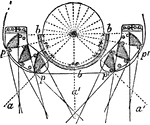
Condensing Quadrant
"Condensing Quadrant.—The fixed apparatus bbb, with spherical mirror behind, throws its rays directly…
Crystal Movement
"Movement of the left bar...upon rotating the stage to the right, and movement of the colored rings…
Diffraction
"Throw a sunbeam through a very small opening in the shutter of a darkened room. Receive the beam upon…
Diminish Shadow
"Since A is producing light and larger than object B, the shadow of B continuously shrinks to a single…
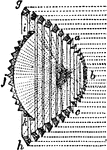
Dioptric Holophote
"Perfect Form of Dioptric Holophote for an Oil Flame.—By combining the back prisms ga, hc just described…

Extinction Angles
"Maximum extinction angles in the Pyroxene and Amphibole groups. Solid lines indicate extinction angles…

Extinction Angles
"Extinction angles on the (001) faces of the lime-soda feldspars." -Johannsen, 1908

Extinction Angles
"Extinction angles on the (010) faces of the lime-soda feldspars." -Johannsen, 1908
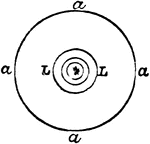
Holophotal Catadioptric
"Holophotal Catadioptric Apparatus Revolving round a Central Flame." —The Encyclopedia Britannica,…

Light Intensity Versus Distance
"Another illustration of how luminous density varies inversely as the square of the distance." —Croft…

Dispersion of Light
"The intensity of light from a candle decreases proportionally with an increase in distance from the…

Rays of Light
"Rays of light are said to diverge, when they proceed from the same point, and constantly recede from…
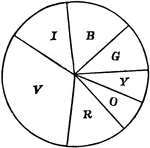
Newton disk
"Make a 'Newton disk', painting the prismatic colors in proper proportion as indicated." — Avery,…

Parabolic Profile
"In order strictly to equalize a fixed light over the whole horizon, which could not possibly be done…
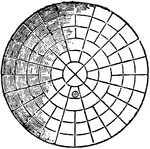
Parabolic Reflector
"In 1763, or at latest before 1777, parabolic reflectors were first used for lighthouse illumination…
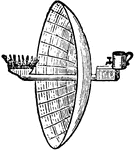
Parabolic Reflector
"In 1763, or at latest before 1777, parabolic reflectors were first used for lighthouse illumination…
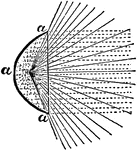
Paraboloid
"It will be seen that the parabolic mirror a is at best but a very imperfect instrument, for even if…

Phanakistoscope
An optical instrument which the representatin of actual motion, as in leaping, walking, flying, etc.

Photometry
A diagram of how photometry works. The light from each object is measured by comparing the intensity…
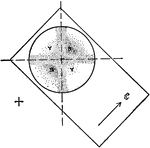
Gypsum Plate
"Determination of the optical character of a uniaxial crystal with the gypsum plate. Quartz (+)." -Johannsen,…
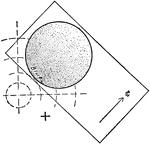
Gypsum Plate
"Determination of the optical character of a uniaxial crystal with the gypsum plate when the center…
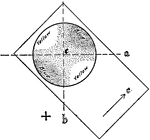
Gypsum Plate
"Determination of the optical character of a biaxial crystal in a section cut perpendicular to the acute…

Gypsum Plate
"Determination of the optical character of biaxial crystals in sections showing the emergence of an…

Mica Plate
"Determination of the optical character of a uniaxial crystal with the mica plate. (a) Positive. (b)…

Polariscope
This is an illustration of a polariscope. Polariscopes are tools used to measure the polarisation of…

Polariscope
An optical instrument, various forms of which have been contrived for exhibiting the polarization of…

Polarization of Light
"The effect of holding polarizing lenses at right angles to each other." -Avery 1895
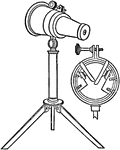
Polyangular Kaleidoscope
"Another form is called the polyangular kaleidoscope. The only essential difference in it is that the…
Prism
"A prism is a piece of glass, having for its sides three plane surfaces and for its ends two equal and…

Prism Spectroscope from the Late 19th Century
"...a tube with a slit at the further end through which the light enters, and at the other end a collimating…
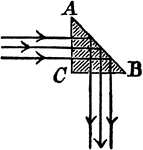
Cathetal Prism
"Cathetal prisms readily yield the phenomena of total reflection as shown, and are often used when light…
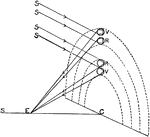
Rainbow Diagram
A bow of prismatic colors formed from the reflection and refraction of the sun and water. In the diagram,…
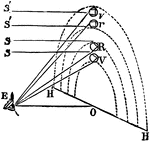
Secondary Rainbow
"The inner or primary bow is much brighter than the other; the outer or secondary bow has the order…
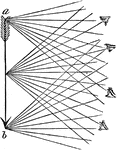
Pencils of Rays
"These pencils of rays not only flow from the points designated in the figure, but in the same manner…
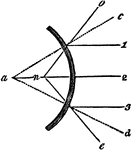
Divergent Rays
"From the surface of a plane mirror, parallel rays are reflected parallel; but the convex mirror causes…

Reflecting Prism
"Fresnel next conceived the admirable improvement of employing the principle of "total" or internal…
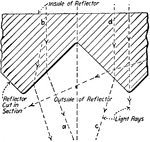
Prismatic Reflector
"Cross-section of prismatic reflector, showing how light rays are refracted and dispersed." —Croft…

Rotator
"In photometry (measure of light), a mounting for an incandescent lamp ... Rotator. The lamp to be tested…
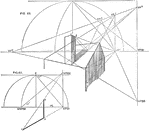
Shadow of a Perpendicular Object
"To show how a shadow if a perpendicular object is to be projected on an inclined plane." -Benson, 1891

